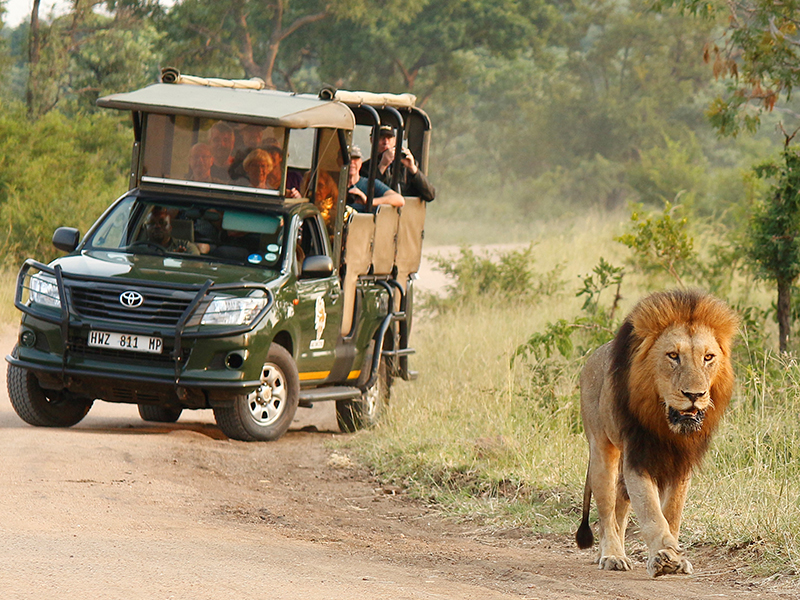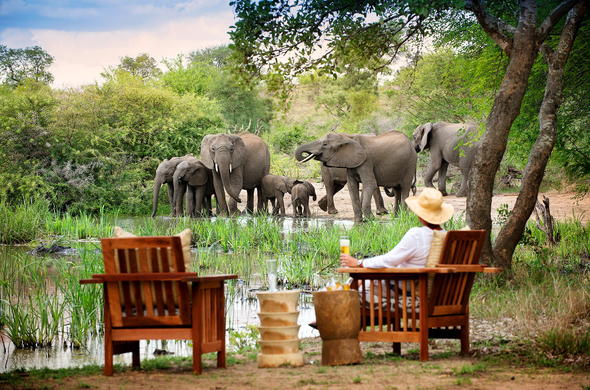Top Reasons to Select Kruger Park Safaris for Your Following African Journey
Wiki Article
Checking Out the Majestic Wildlife and Scenic Landscapes of Kruger Park Safaris: An Unforgettable Experience Waits For
Kruger Park, a cornerstone of South Africa's natural heritage, offers an elaborate tapestry of wildlife and breathtaking landscapes, inviting expedition and involvement with its varied environments. As site visitors venture into this large refuge, they run into not just the renowned Big Five yet likewise a riches of other varieties that improve the park's biodiversity.Review of Kruger Park
Among South Africa's biggest and most distinguished game reserves, Kruger National forest covers approximately 19,485 square kilometers in the northeastern area of the nation. Established in 1898, it is a keystone of preservation efforts, showcasing varied environments that include savannas, woodlands, and riverine woodlands. The park is home to an excellent range of wildlife, with over 500 bird types and various mammals, reptiles, and plants, making it a biodiversity hotspot.Kruger National forest is split into numerous regions, each offering unique landscapes and environments, therefore enhancing wild animals watching chances. Visitors can explore the park via self-drive paths or directed safaris, enabling an immersive experience in nature. The park's facilities consists of well-kept roadways, rest camps, and outing locations, making sure accessibility for all sorts of vacationers.
Furthermore, Kruger National forest plays a pivotal function in education and learning and research, adding to international conservation efforts. The park's dedication to lasting tourism advertises liable wildlife viewing, promoting a much deeper appreciation for South Africa's natural heritage. With its awesome views and rich biodiversity, Kruger National Park stays a leading location for journey seekers and nature lovers alike.
The Huge 5 Experience
Kruger National forest is renowned for offering visitors the chance to come across the legendary Big Five, that includes the lion, leopard, elephant, buffalo, and rhinoceros. This distinct chance to observe these magnificent pets in their all-natural environment attracts wild animals fanatics and journey seekers from around the globe.The excitement of identifying the Large Five is not merely regarding the pets themselves yet additionally the context of their setting. Each safari presents a brand-new journey, as guides share insights right into the behaviors, habitats, and conservation efforts bordering these varieties. The evasive leopard, often seen relaxing in the trees, showcases the charm of dexterity and stealth, while the enforcing elephant herd highlights the importance of social structures within wildlife communities.

The Cape buffalo, understood for their uncertain nature, adds an element of enjoyment to any kind of safari. This immersive experience cultivates a deeper gratitude for wild animals and emphasizes the relevance of maintaining these unbelievable animals for future generations.
Breathtaking Landscapes and Ecosystems
Regularly commemorated for its awesome elegance, the landscapes of Kruger National forest use a varied tapestry of ecosystems that enhance the safari experience. Extending nearly two million hectares, the park is home to a wide range of habitats, including savannahs, woodlands, rivers, and marshes. Each community is uniquely interwoven, developing a vibrant atmosphere that sustains a variety of plants and fauna.The savannahs, characterized by substantial meadows populated with acacia and baobab trees, give perfect grazing grounds for herbivores like zebras and wildebeests. On the other hand, the dense timberlands and thickets provide haven for killers and smaller species, cultivating a rich biodiversity. The park's waterholes and rivers are lifelines for wildlife, bring in a plethora of pets, especially throughout the completely dry season.
This intricate interplay of ecological communities not just supports the park's legendary wildlife however also provides site visitors with sensational panoramas, from rolling plains to remarkable rough outcrops. Whether traversing open savannahs or checking out thick bushveld, the beautiful landscapes of Kruger National forest promise to leave an indelible mark on every safari lover's heart.
Ideal Times to Check Out
Recognizing the most effective times to check out Kruger National forest can considerably improve the safari experience. Kruger park safaris. The park experiences 2 main periods: the completely dry cold weather from May to September and the damp summertime from October to April. Each season offers distinct advantages for wildlife watching and landscape recognitionThroughout the dry season, animals gather together around water sources, making wild animals detecting extra foreseeable. The plant life thins out, providing clearer presence for discoveries of the Large Five and other types. This period is especially prominent among visitors as a result of the desirable important site conditions for game drives and guided strolls.
Alternatively, the wet season, identified by lush landscapes and lively vegetation, is ideal for birdwatching fanatics. Kruger park safaris. Migratory birds are abundant, and the park comes to be a sanctuary for numerous bird types. In addition, this season notes the birth of several young pets, using a chance to witness the fascinating characteristics of wild animals interactions
Ultimately, the most effective time to see depends upon personal choices, whether one seeks the ease of wild animals sightings or the beauty of a growing environment. Despite the period, Kruger National forest promises a memorable journey for all that venture into its wild embrace.
Safari Tips and Standards

When planning your safari,Think about the time of year. The dry season, from May to September, generally uses much better wild animals viewing opportunities. Outfit in neutral colors to blend right into the atmosphere, and avoid showy or intense clothes that might surprise pets.
Load essentials such as binoculars, a video camera, sun block, and insect repellent. Staying moisturized is essential-- carry enough water go to the website for your team. Furthermore, be mindful of the park's wild animals; observe from a distance and never ever attempt to feed or prompt animals, as this can change their natural habits.
Engage with seasoned guides, that supply indispensable insights and improve your understanding of the community. Approach your safari with persistence and an open heart, allowing for spontaneous minutes that will develop unforgettable memories in this magnificent landscape.
Final Thought
In verdict, Kruger Park offers an unparalleled opportunity to involve with varied wildlife and impressive landscapes. With cautious planning and adherence to guidelines, a journey in Kruger Park promises to be both improving and unforgettable for all that begin on this trip.Kruger Park, a keystone of South Africa's all-natural heritage, uses a detailed tapestry of wild animals and awesome landscapes, welcoming exploration and involvement with its varied ecosystems.Kruger National Park is separated into numerous regions, each offering unique landscapes and habitats, hence improving wild animals viewing opportunities. The park's rivers and waterholes are lifelines for wildlife, bring in a myriad of pets, particularly throughout the completely dry season.
Furthermore, be conscious of the park's wild animals; observe from a distance and view it never effort to feed or provoke pets, as this can alter their all-natural habits.

Report this wiki page